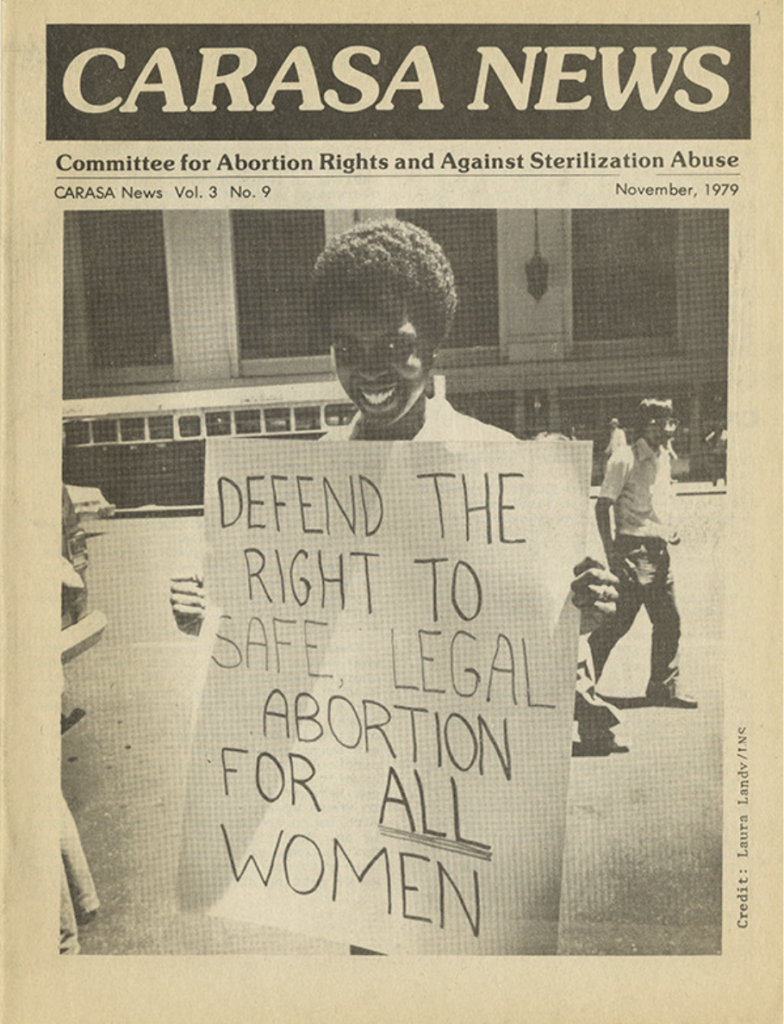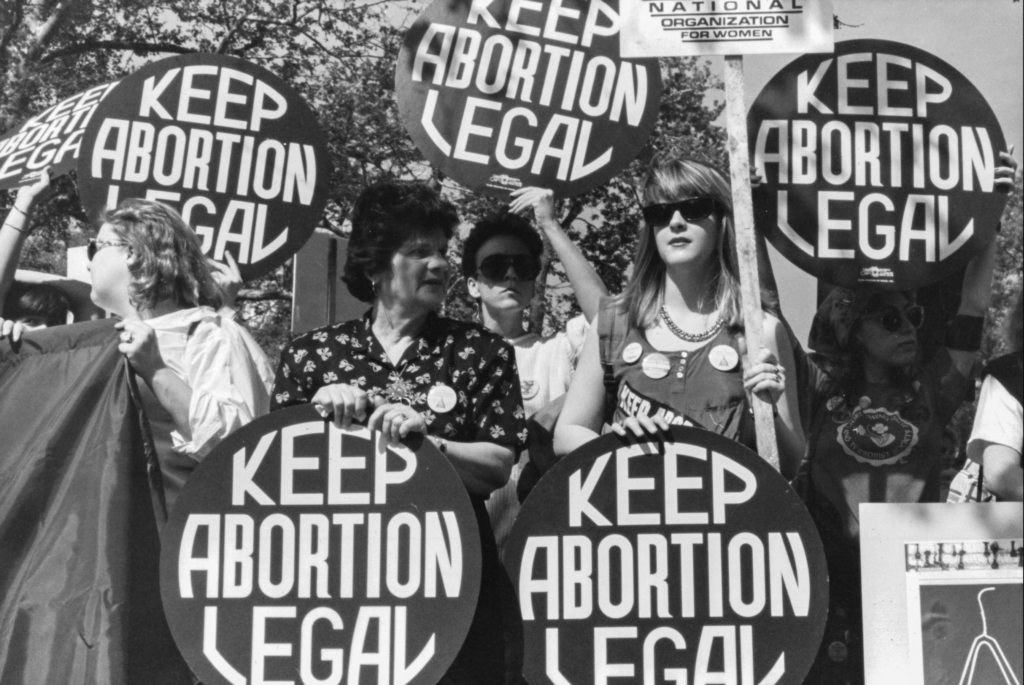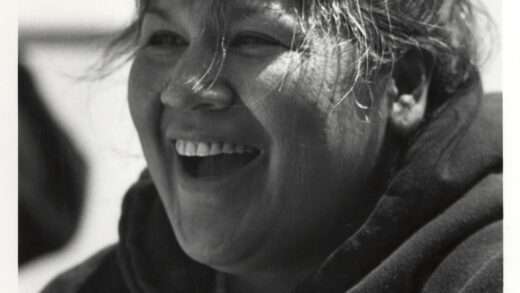Ella Bernheimer
This podcast explores reproductive justice with a focus on motherhood. I discuss Rachel E. Gross’ “Vagina Obscura,” practices of forced sterilization, and the recent Roe v. Wade decision.
Transcript
Hello! I’m Ella Bernheimer and in this podcast I’m going to discuss reproductive justice and the ways that it is connected to motherhood, largely through broad themes of control, power, and value.
An important theme to explore in discussions of abortion rights and reproductive justice is the idea that societal conceptions of a woman’s value are heavily impacted on being a mother and the ability to have children. The value placed on motherhood is reflected historically and currently, especially through the medical and political spheres. This is shown through the historical domination of the medical field by men, and the effects that this had and still has on women. This is a common theme in Rachel E. Gross’ “Vagina Obscura.” In her book, Gross discusses female reproductive organs through medical, historical, and narrative approaches. A theme of longstanding ignorance of women’s health is woven throughout her exploration of the body.
“The ultimate cure was always the same: the holy trinity of marriage, sex, and pregnancy”
This quote from Gross’ book is about hysteria being considered as a diagnosis in ancient Greece speaks to the ways that aspects of the medical field reflect upon societal values that come from longstanding male dominance. Throughout the book, there are examples of dismissal of pain or conditions that women face but were not taken seriously by men. Marriage, sex, and pregnancy being perscribed as treatment speak to the ways that value is placed onto women and how this manifests in their lives. This is just one example from a long history of inequality and sexism in medicine, especially in regards to reproductive health. Although the “ultimate cure” that Gross refers to describes a phenomenon from ancient Greece, the connections between medical mistreatment and gender inequality remain in our culture today.
Medical practices and history can give insight into themes of power dynamics and control within reproductive justice. This can be examined through the usage of motherhood as means of controlling populations, with forced sterilization and the right to abortion. Forced sterilization has a long history in the United states, and has been used as means of control.
An article from the Berkeley Political Review states that “Throughout the 20th century, nearly 70,0000 people (overwhelmingly working-class women of color) were sterilized in over 30 states. Black women, Latina women, and Native American women were specifically targeted” (bpr).
Attacking reproductive freedom through practices of forced sterilization speaks to the ways that motherhood is valued in society, especially because of who was (and is) targeted.
In administrative records from the 1970s from the Committee for Abortion Rights and Against Sterilization Abuse, there is discussion of the (quote un quote) “new right.” The “new right” refers to a political movement in the 1960s and 70s that pushed back against counterculture and the (quote unquote) “new left,” and often involved groups who were largely white, middle class, and christian (Cunningham). The committee records note the impacts that christianity in the “new right” have on anti abortion movements. This connects to ideas of morality and family that are intertwined with christianity within the “new right.” The ways in which the white, middle class family is valued in America reflects upon the ways in which motherhood is valued over womanhood, and speaks to how motherhood is controlled and used by white men in power to maintain and gain that power.
Christianity in conservative politics continues to have effects on reproductive justice today, with the recent decision to overturn Roe v wade. In a Ms magazine article by Andrea Becker from October 2022, titled “It Was Never About Saving Babies. It Was Always About Motherhood,” Becker discusses Amy Coney Barrett and her role in the decision. Barrett is a conservative and catholic judge, who Becker describes as “a woman who centers her identity as a mother before any other personal attribute or accomplishment.” Becker explores what this means in a symbolic sense, stating that through Barrett’s appointment as a judge and her role in the decision to overturn roe v wade, “the Republican party is reminding us of their underlying, fervent wish: for women to remember their place as mothers first and humans second.” Becker’s argument about how conservatism and christianity shape the ways that motherhood is valued in society connects back to ideas surrounding standards of motherhood and family. In the article, she states that “societal ideas of what makes a “good mother” in the U.S. has always described the mothering of upper middle class white women.” This draws a connection to who is most targeted and affected by practices and legislature that takes away choice with reproductive health.
Examining the relationship between reproductive justice and motherhood speaks to ideas of power and control. Gross’ book shows how inequality surrounding knowledge and power in the medical field is related to patriarchal belief systems, which go back centuries. Inequality and oppression of women through health and medicine continues into the twentieth century with forced sterilization, which targets women of color especially. The forced sterilization practices are rooted in white supremacy and the values of the “new right,” which push the value placed on the white, middle class mother over others. This narrative remains connected to reproductive justice today, as christianity in conservative policies still impacts the right to choose. Reproductive health and the right to choose being attacked show the ways that motherhood is valued over womanhood.
Works Cited
MANJESHWAR, SANJANA. “America’s Forgotten History of Forced Sterilization.” Berkeley Political Review. UC Berkeley, November 4, 2020. https://bpr.berkeley.edu/2020/11/04/americas-forgotten-history-of-forced-sterilization/.
Becker, Andréa. “It Was Never about Saving Babies. It Was Always about Motherhood.” Ms. Magazine. Feminist Majority Foundation, December 21, 2020. https://msmagazine.com/2020/10/02/amy-coney-barrett-abortion-motherhood/.
Cunningham, S. P.. “New Right.” Encyclopedia Britannica, May 19, 2016. https://www.britannica.com/topic/New-Right.
GROSS, RACHEL E. Vagina Obscura: An Anatomical Voyage. S.l.: W W NORTON, 2023.
Roberts, Dorothy E. “Introduction.” Introduction. In Killing the Black Body: Race, Reproduction, and the Meaning of Liberty, 1–21. New York: Pantheon Books, 1997.
Karen Stamm collection of Committee for Abortion Rights and Against Sterilization Abuse (CARASA) records (SSC), “Outreach Proposal,” December 1, 1977, SSC-MS-00811, Box 1, Sophia Smith Collection of Women’s History, Sophia Smith Collection of Women’s History Repository. https://findingaids.smith.edu/repositories/2/archival_objects/383468



Image Citations:
Jewish Women’s Archive. “Pro-Choice Demonstrators Outside the Supreme Court in 1989, Washington DC.” (Viewed on December 6, 2022) <https://jwa.org/media/pro-choice-demonstrators-outside-supreme-court-1989-washington-dc>.
Committee for Abortion Rights and Against Sterilization Abuse (CARASA) News, v. 3, No. 9 (1979). New York, N.Y. From the Joseph A. Labadie Collection, University of Michigan. UNIVERSITY OF MICHIGAN LIBRARY. ©2022 Regents of the University of Michigan. Accessed December 4, 2022. https://apps.lib.umich.edu/online-exhibits/exhibits/show/reproductive-justice/item/2416.
CARASA News newsletter, 1979, Karen Stamm collection of Committee for Abortion Rights and Against Sterilization Abuse (CARASA) records, Sophia Smith Collection of Women’s History, SSC MS 00811, Smith College Special Collections, Northampton, Massachusetts.


